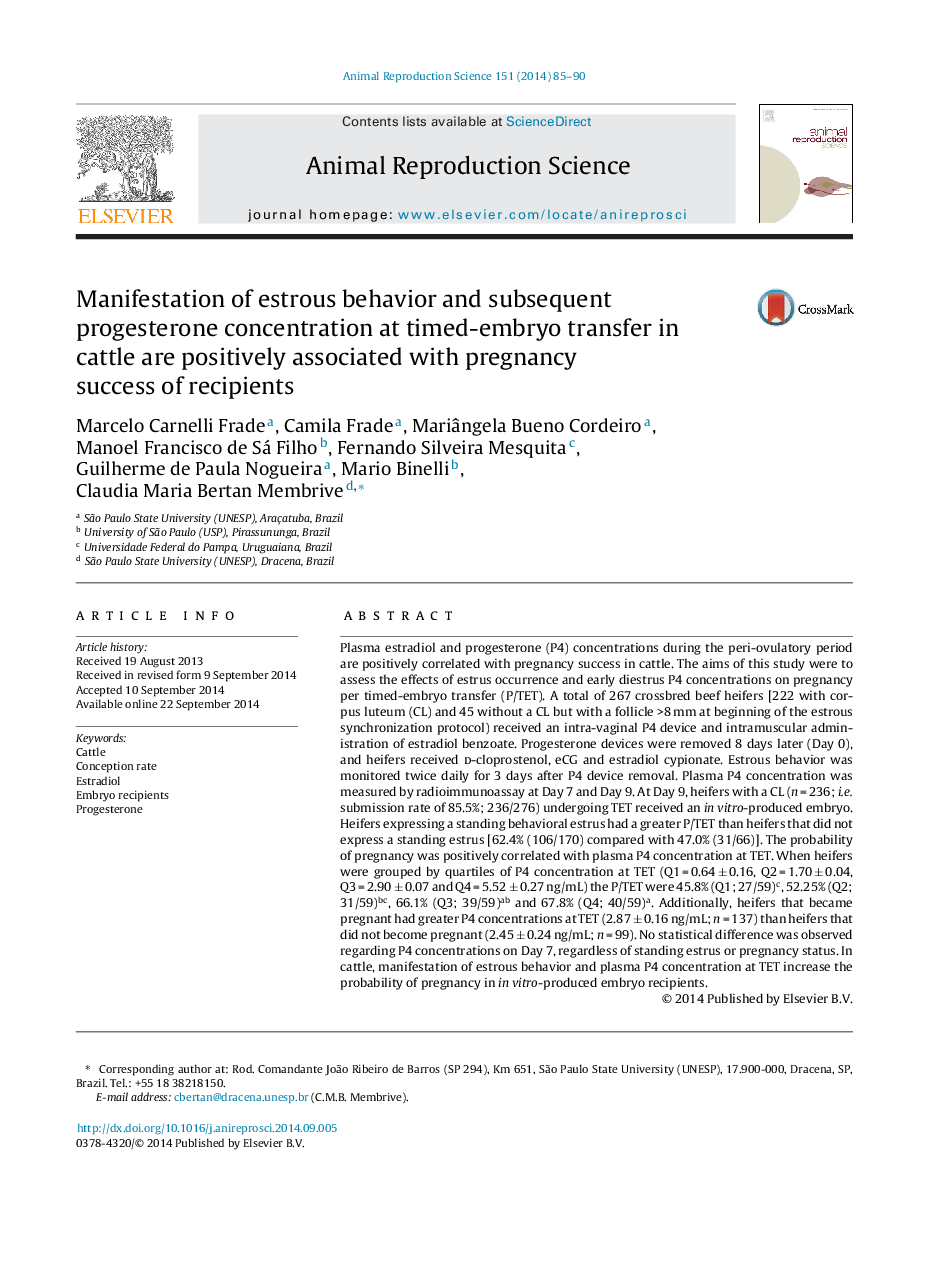| Article ID | Journal | Published Year | Pages | File Type |
|---|---|---|---|---|
| 2072742 | Animal Reproduction Science | 2014 | 6 Pages |
Plasma estradiol and progesterone (P4) concentrations during the peri-ovulatory period are positively correlated with pregnancy success in cattle. The aims of this study were to assess the effects of estrus occurrence and early diestrus P4 concentrations on pregnancy per timed-embryo transfer (P/TET). A total of 267 crossbred beef heifers [222 with corpus luteum (CL) and 45 without a CL but with a follicle >8 mm at beginning of the estrous synchronization protocol) received an intra-vaginal P4 device and intramuscular administration of estradiol benzoate. Progesterone devices were removed 8 days later (Day 0), and heifers received d-cloprostenol, eCG and estradiol cypionate. Estrous behavior was monitored twice daily for 3 days after P4 device removal. Plasma P4 concentration was measured by radioimmunoassay at Day 7 and Day 9. At Day 9, heifers with a CL (n = 236; i.e. submission rate of 85.5%; 236/276) undergoing TET received an in vitro-produced embryo. Heifers expressing a standing behavioral estrus had a greater P/TET than heifers that did not express a standing estrus [62.4% (106/170) compared with 47.0% (31/66)]. The probability of pregnancy was positively correlated with plasma P4 concentration at TET. When heifers were grouped by quartiles of P4 concentration at TET (Q1 = 0.64 ± 0.16, Q2 = 1.70 ± 0.04, Q3 = 2.90 ± 0.07 and Q4 = 5.52 ± 0.27 ng/mL) the P/TET were 45.8% (Q1; 27/59)c, 52.25% (Q2; 31/59)bc, 66.1% (Q3; 39/59)ab and 67.8% (Q4; 40/59)a. Additionally, heifers that became pregnant had greater P4 concentrations at TET (2.87 ± 0.16 ng/mL; n = 137) than heifers that did not become pregnant (2.45 ± 0.24 ng/mL; n = 99). No statistical difference was observed regarding P4 concentrations on Day 7, regardless of standing estrus or pregnancy status. In cattle, manifestation of estrous behavior and plasma P4 concentration at TET increase the probability of pregnancy in in vitro-produced embryo recipients.
